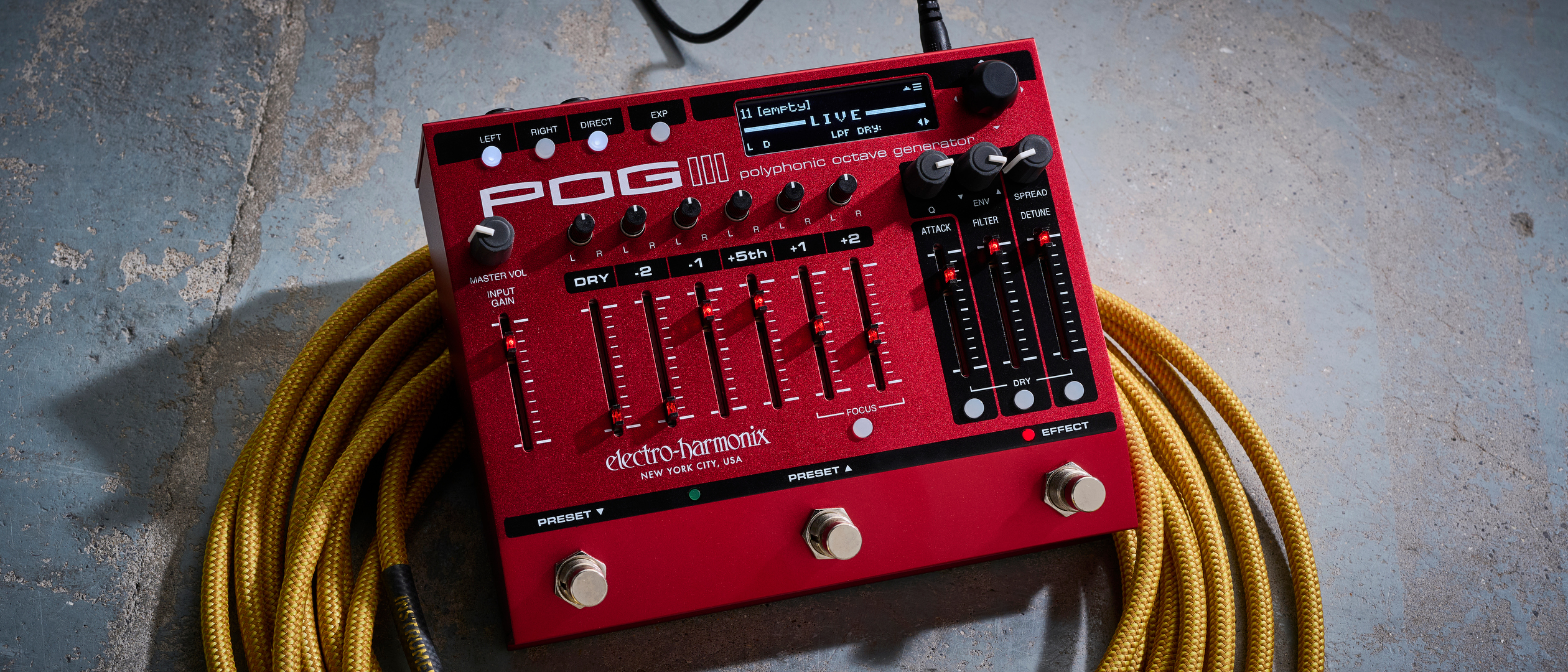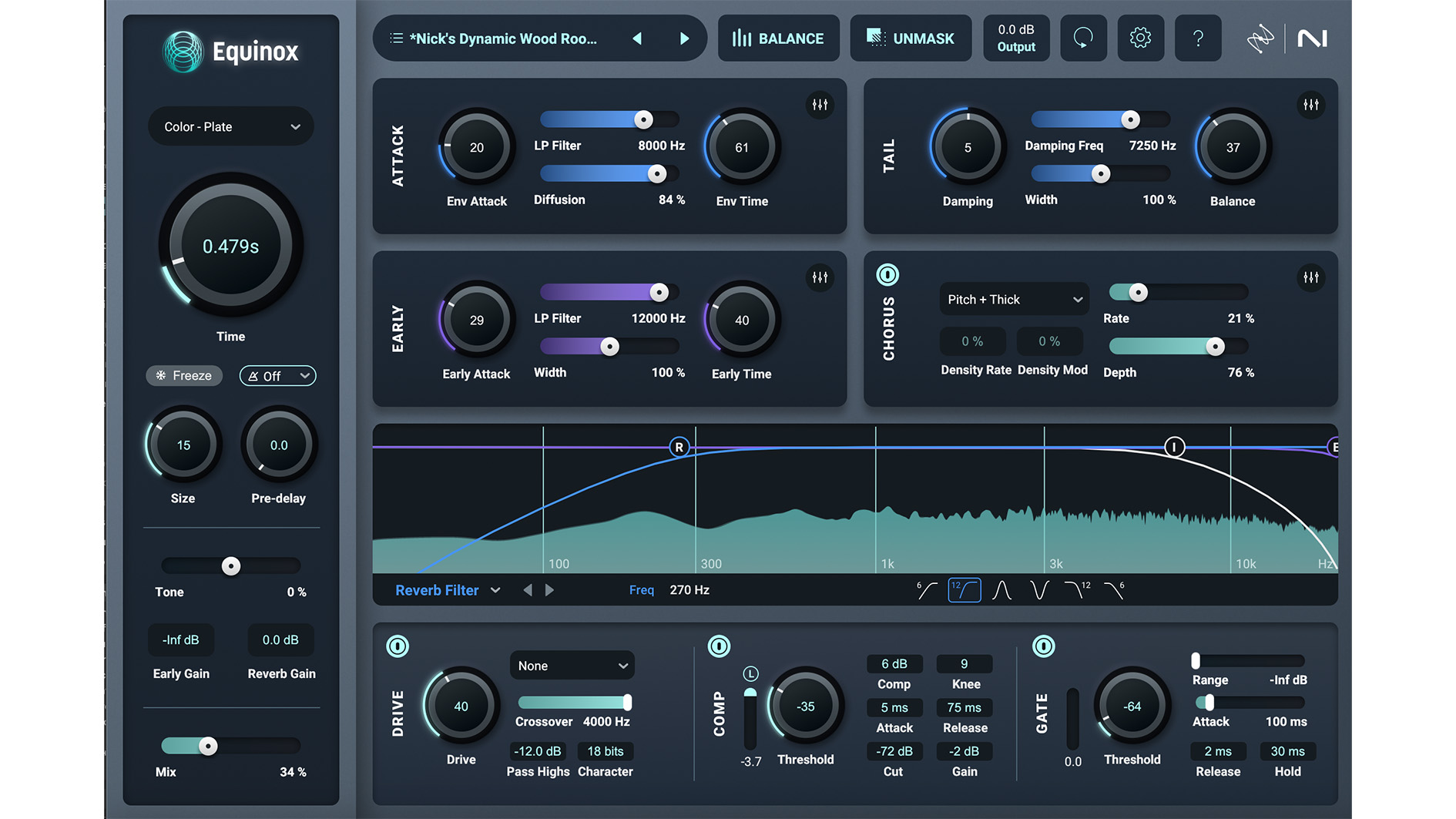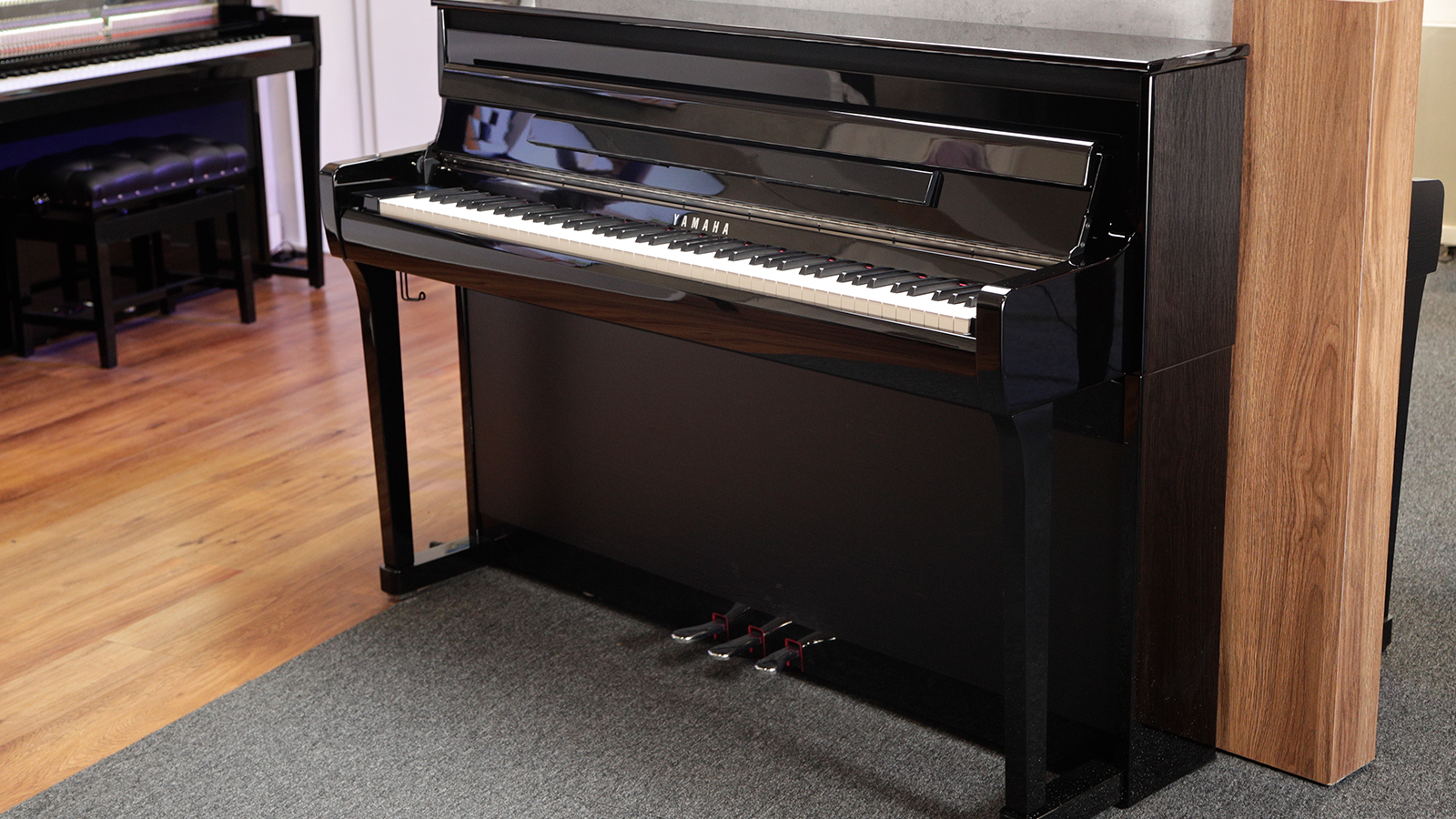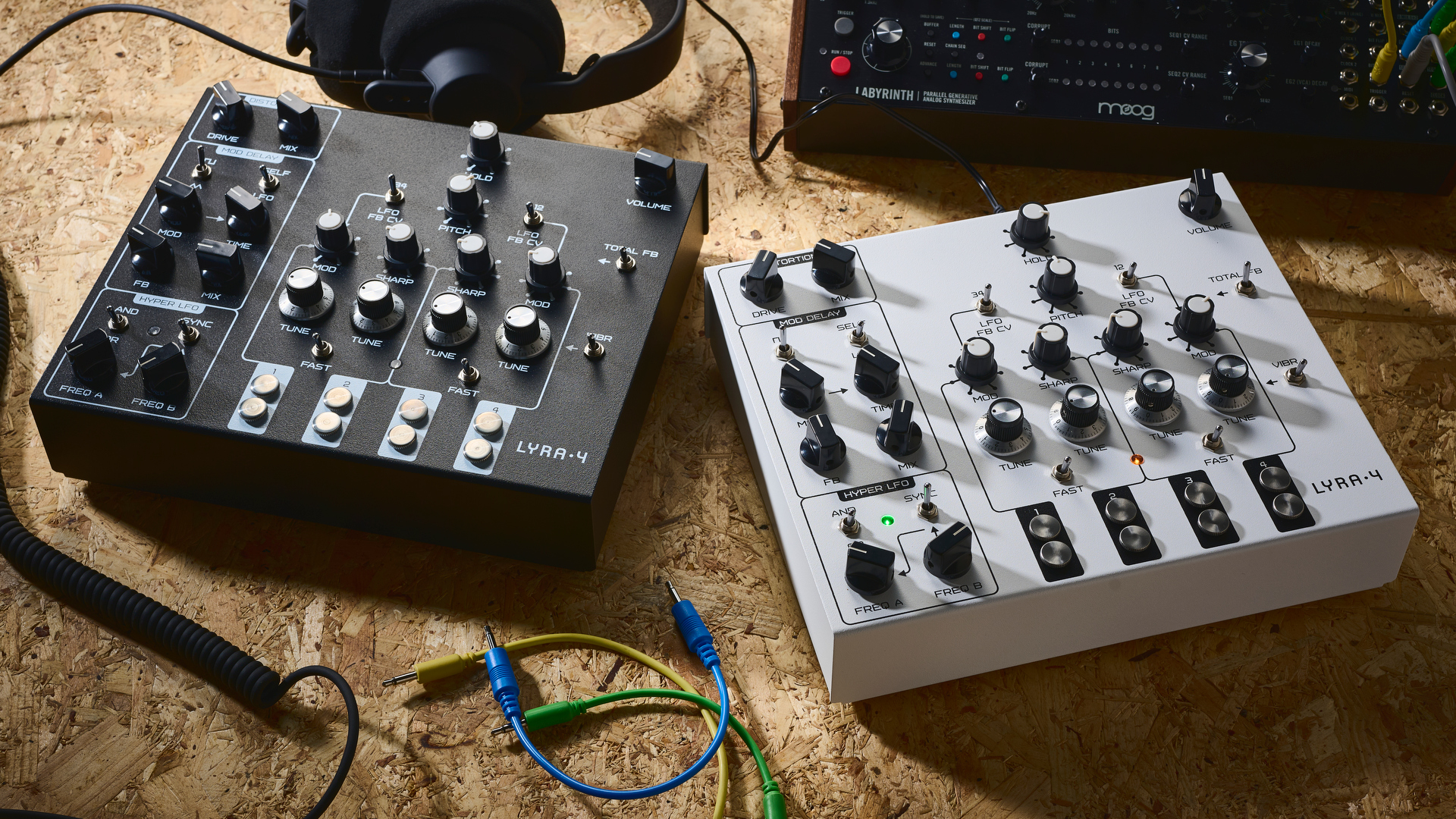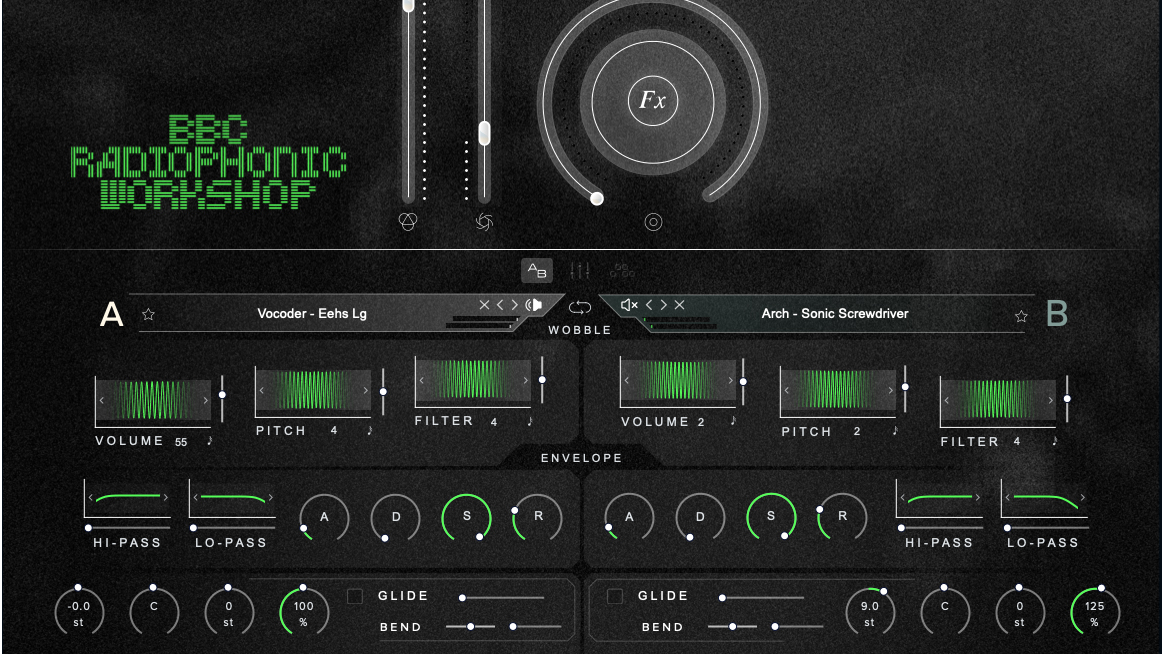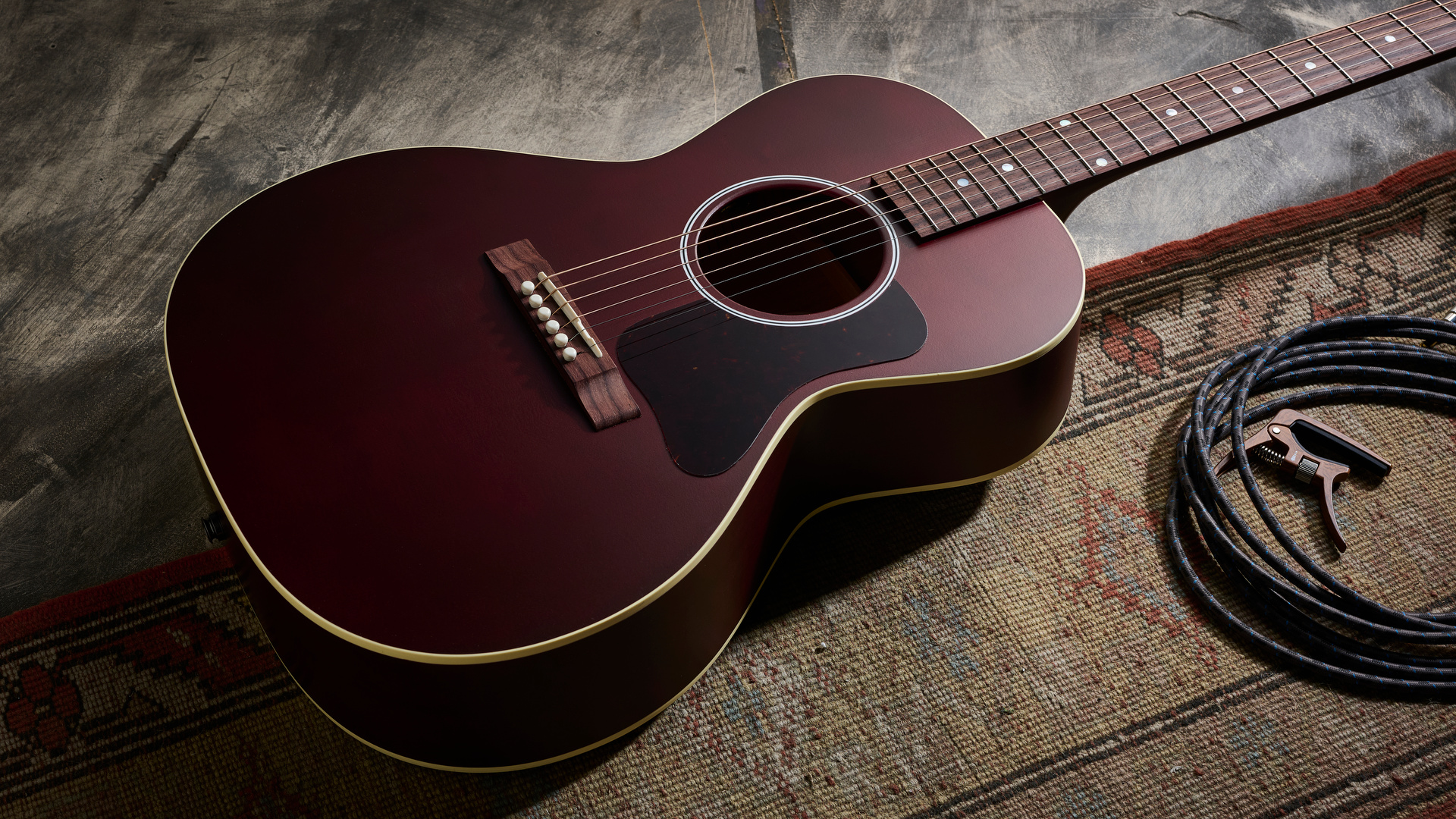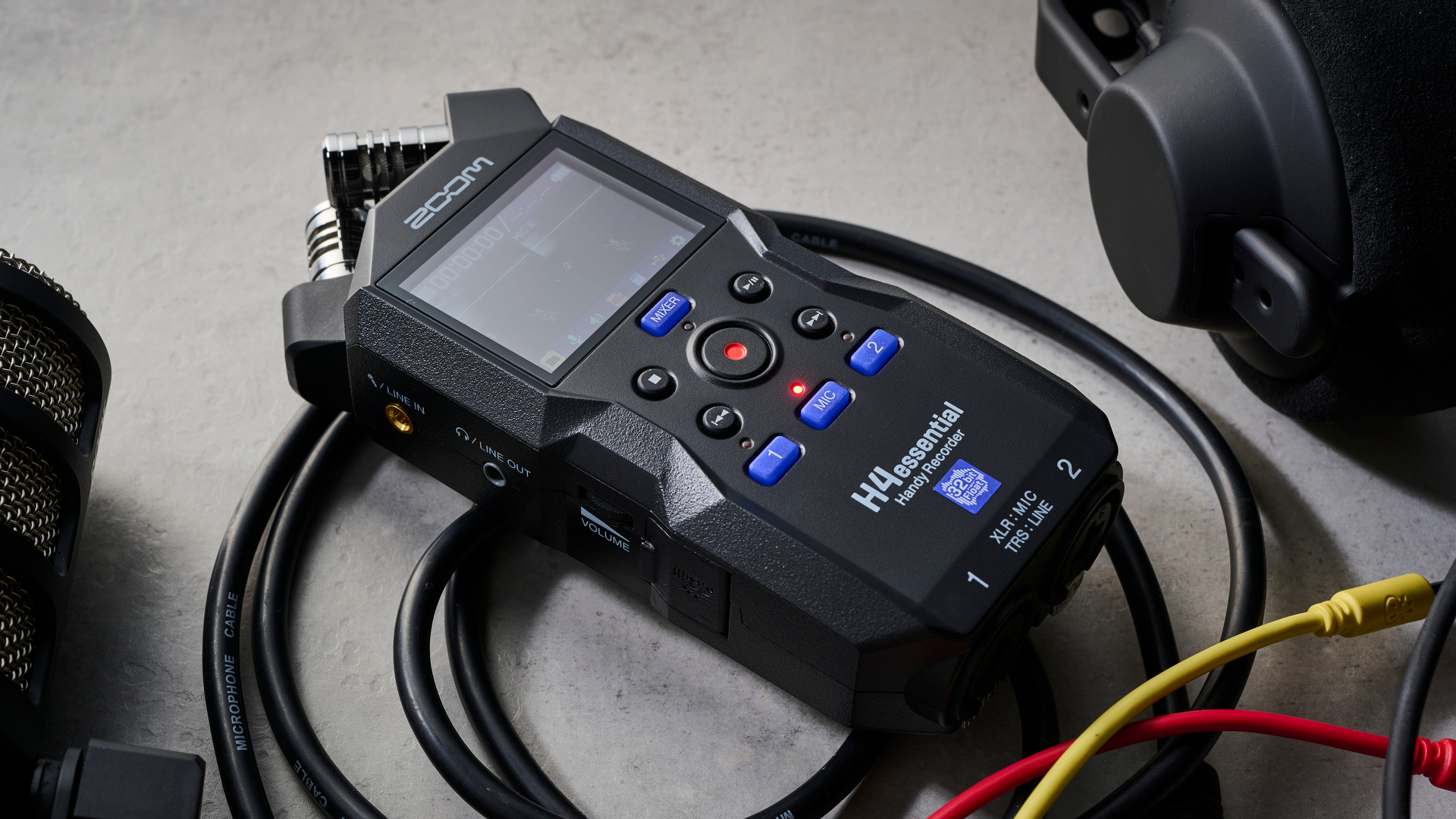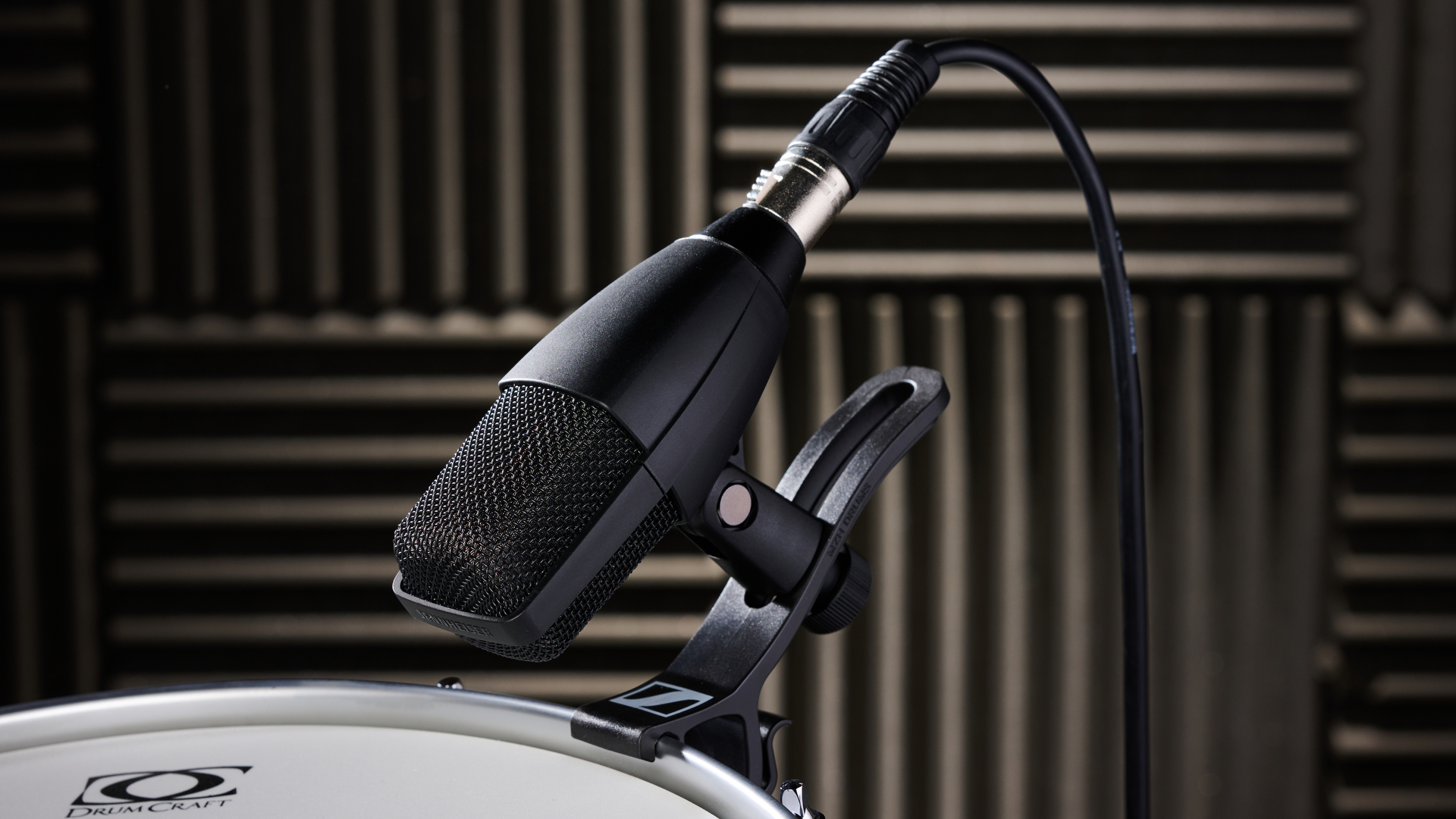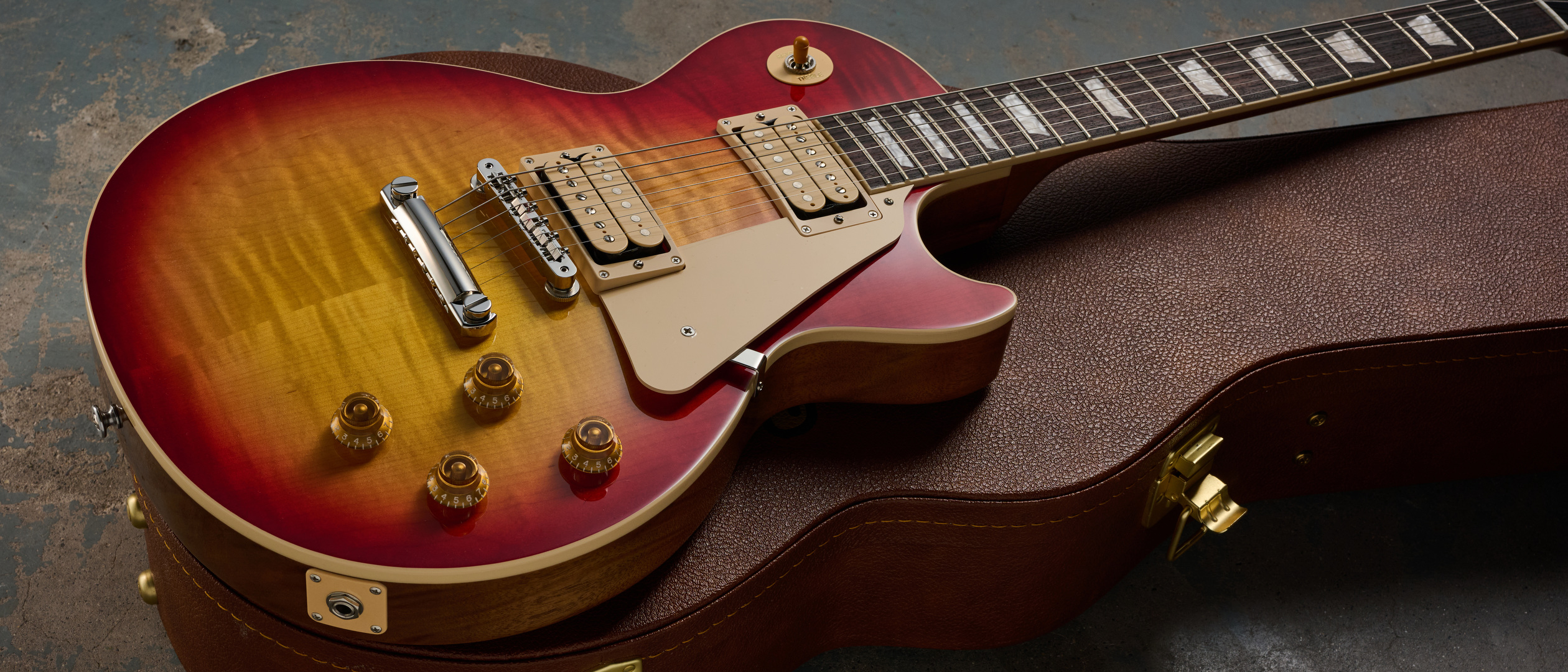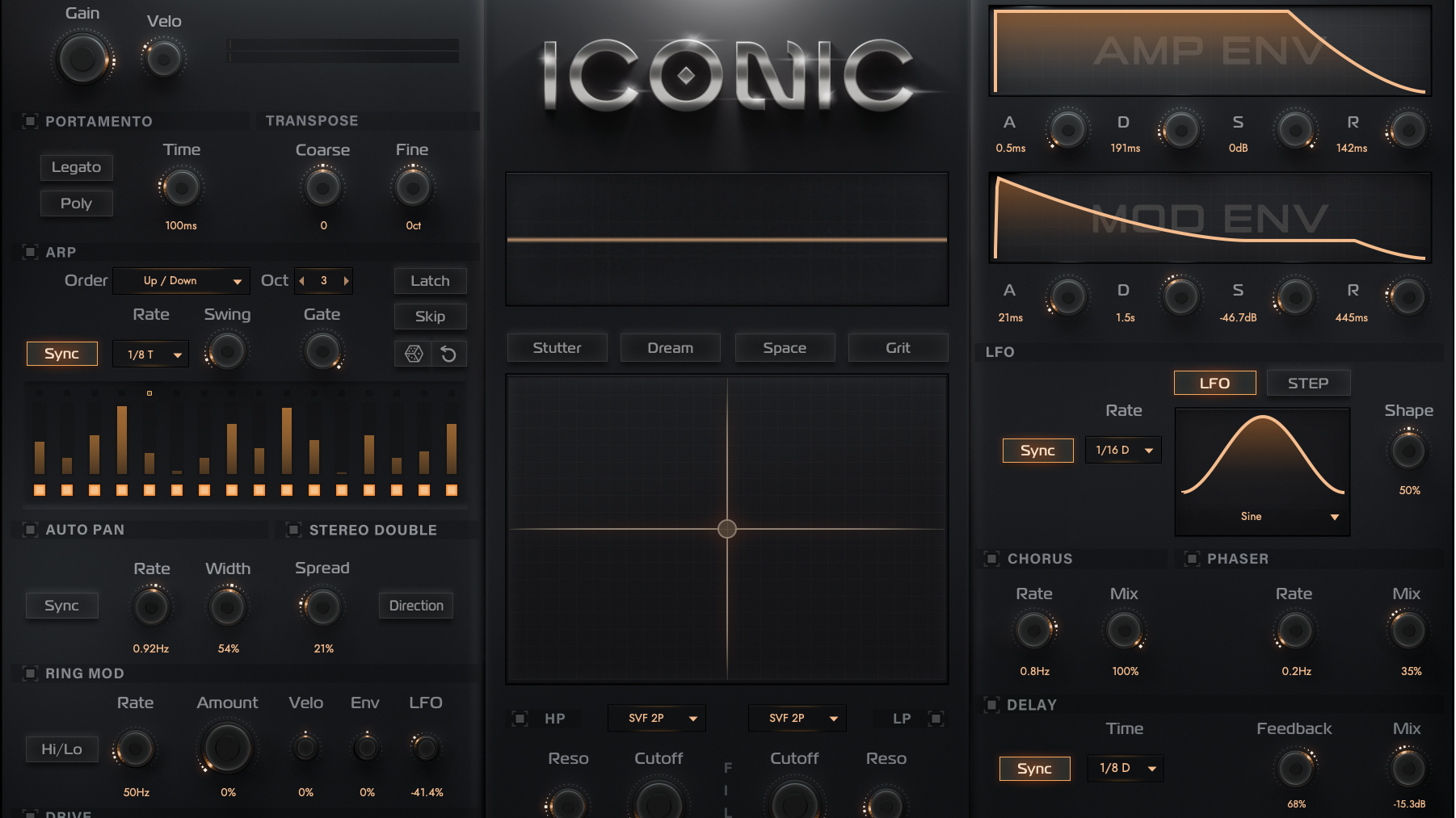MusicRadar Verdict
The Electro-Harmonix POG 3 is ridiculously good fun, providing a bountiful supply of tones that will keep most guitar players experimenting for hours. Despite some small flaws and questions over whether it justifies its big cost, anyone who does take the plunge is guaranteed a good time.
Pros
- +
Covers an incredible array of sounds.
- +
Easy to get started with, but packing loads of depth.
- +
Ultra-flexible connectivity gives plenty of options.
- +
Slider LEDs make for great visual reference.
Cons
- -
Flimsy slider feel.
- -
Lack of stock presets.
- -
No Mac version of app yet.
MusicRadar's got your back
What is it?
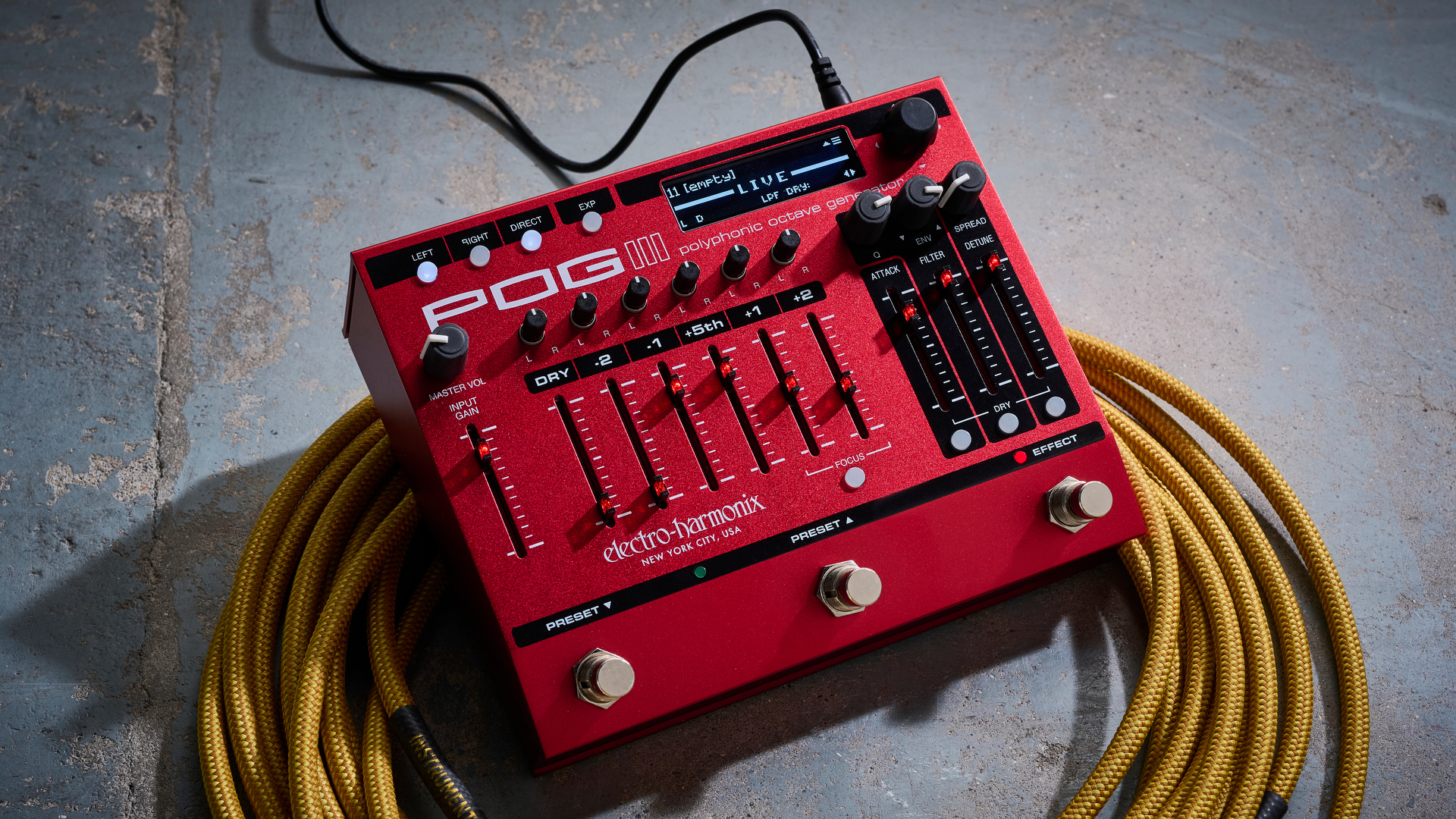
The POG line from Electro-Harmonix has become such a staple of guitar that it’s surprising that it was only launched in 2005. Providing a less error-prone octave tone versus the DigiTech Whammy - which is not a bad-sounding pedal by any means - the POG quickly became a regular on the ‘boards of professional players. It provided polyphonic octave shifting, excellent note tracking, and probably most importantly, a natural-sounding pitch-shifted tone.
It’s been twenty years since the original POG launched, and we’ve seen many iterations arrive since then, from the scaled-down Nano POG to the more involved POG 2, right through to today's futuristic offering in the Electro-Harmonix POG 3. Billing itself as the most "powerful POG ever", it’s got six different voices to play with, an expanded effects section with adjustable Q for the multi-mode filter, a better detune setting, and plenty of options to route your dry signal.
Across the front face there are ten sliders, each of which has its own LED attached that glows a brighter red depending on how far it’s engaged. The input gain slider on the far left has the master volume knob above it, while the six voice sliders each have a panning knob for creating interesting stereo sounds. The effects section meanwhile features Q, Envelope, and Spread knobs for further sculpting your sounds.
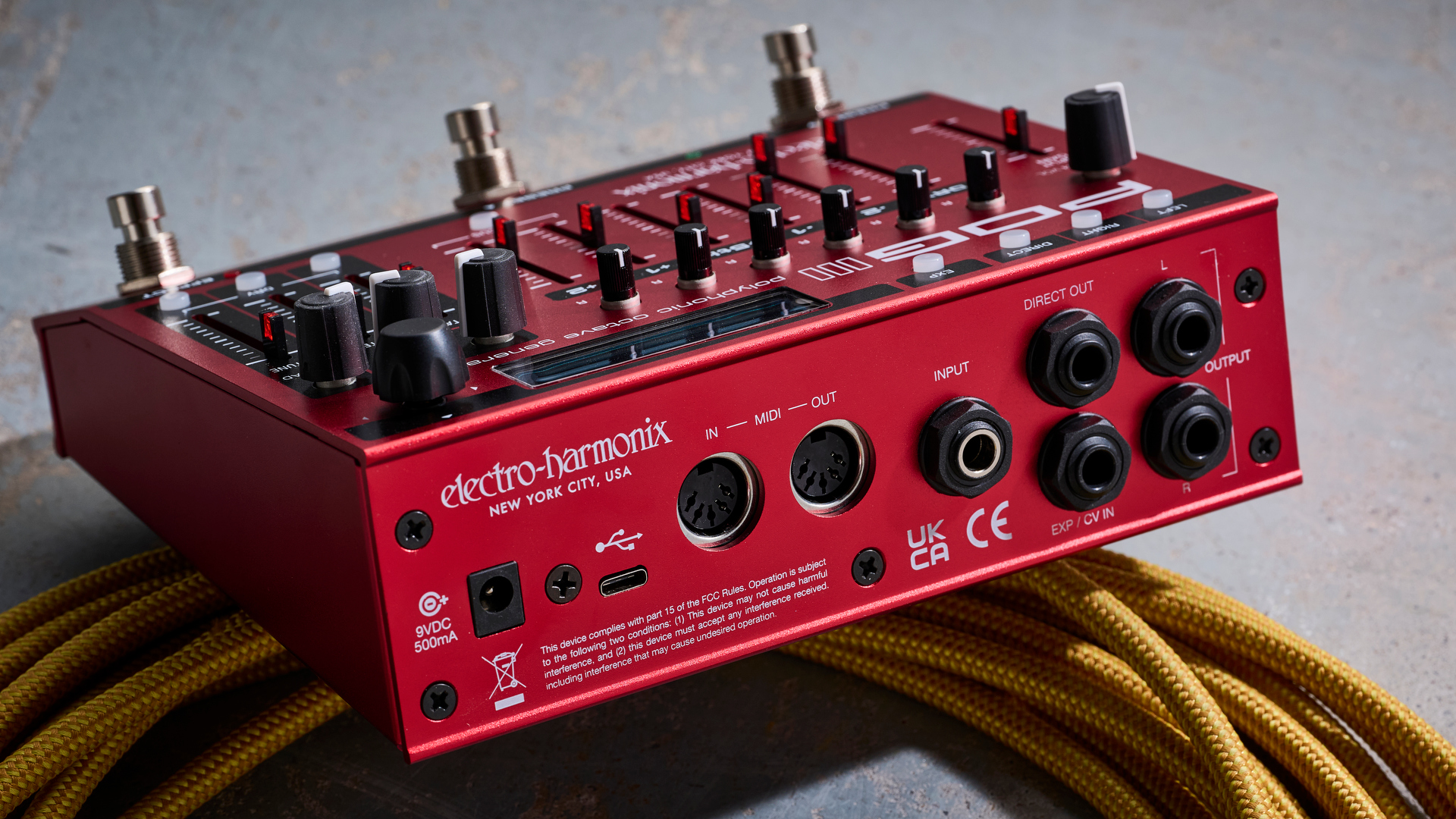
It makes the POG 3 look very Strymon-esque and brings it firmly into the future versus the more retro aesthetic you typically find on EHX pedals
Another brand-new addition is the OLED graphical display, which gives you more visual insight into your settings and routing, as well as a way to manipulate deeper settings with ease. It makes the POG 3 look very Strymon-esque and brings it firmly into the future versus the more retro aesthetic you typically find on EHX pedals.
Preset switching comes via two up-and-down footswitches, and you can save up to 100 different tones for instant recall. There’s also an encoder in the top right of the pedal which helps you navigate presets, and deep dive into menus for fine-tuning. It can be pushed left, right, up, and down, as well as used as a button to confirm selections displayed on the display.
On the back panel, you’ve got a single 1/4-inch input, and separate left and right outputs for connecting to your rig. There’s also a dry-out if you’re sending your signals to multiple amps or, as came in handy when I was using it, you need a DI guitar signal. There’s an expression pedal input for controlling parameters on the fly, and you’ve got MIDI in and out for getting into the real nitty-gritty with controlling the sounds. It also features a USB-C connector for updating the pedal and using the accompanying app.
Specs
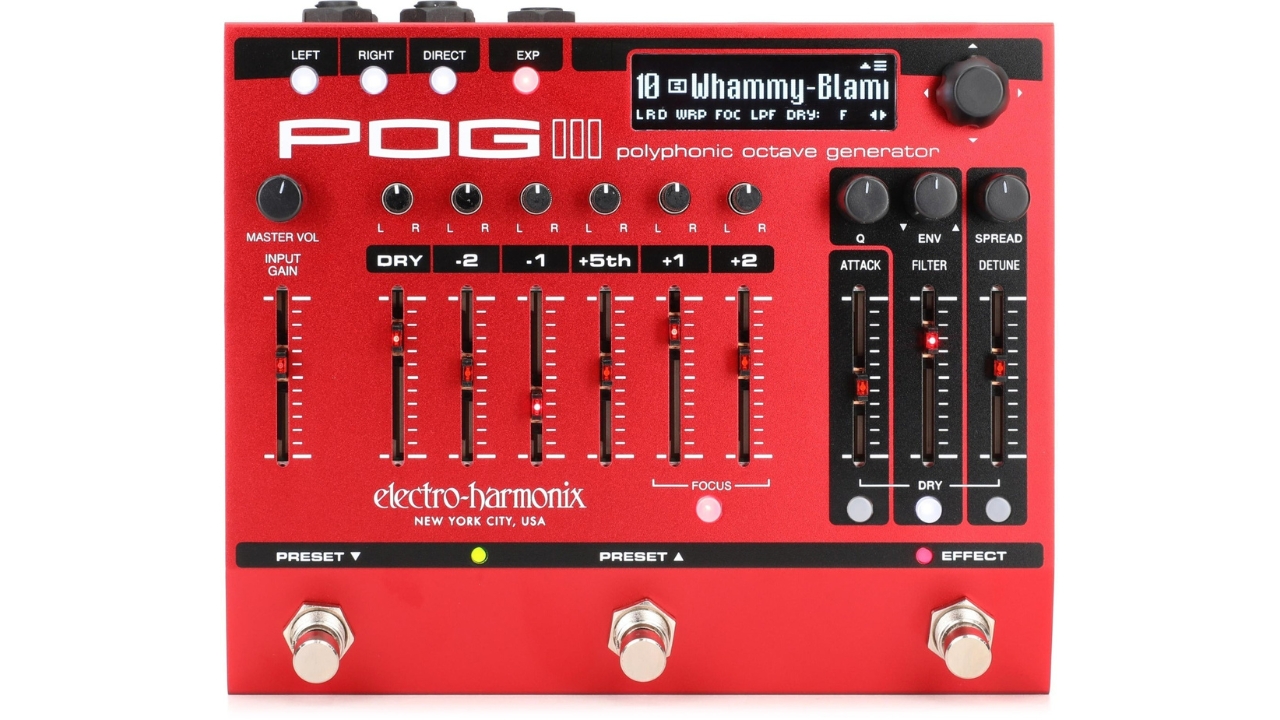
- Launch price: $645/£558/€599
- Type: Polyphonic Octave Generator
- Controls: Master Volume, Input Gain slider, Dry slider, -2 slider, -1 slider, +5th slider, +1 slider, +2 slider, Q knob, Spread knob, Envelope knob, Attack slider, Filter slider, Detune slider, Encoder
- Connectivity: 1 x 1/4" (input), 2 x 1/4" (L, R), 1 x 1/4" (DI out), 2 x 5-pin DIN (In, Out), 1 x 1/4" (Expression, CV out), 1 x USB-C
- Bypass: Buffered
- Power: 9V 500mA
- Dimensions: 181 x 57 x 146mm
- Contact: Electro-Harmonix
Build quality
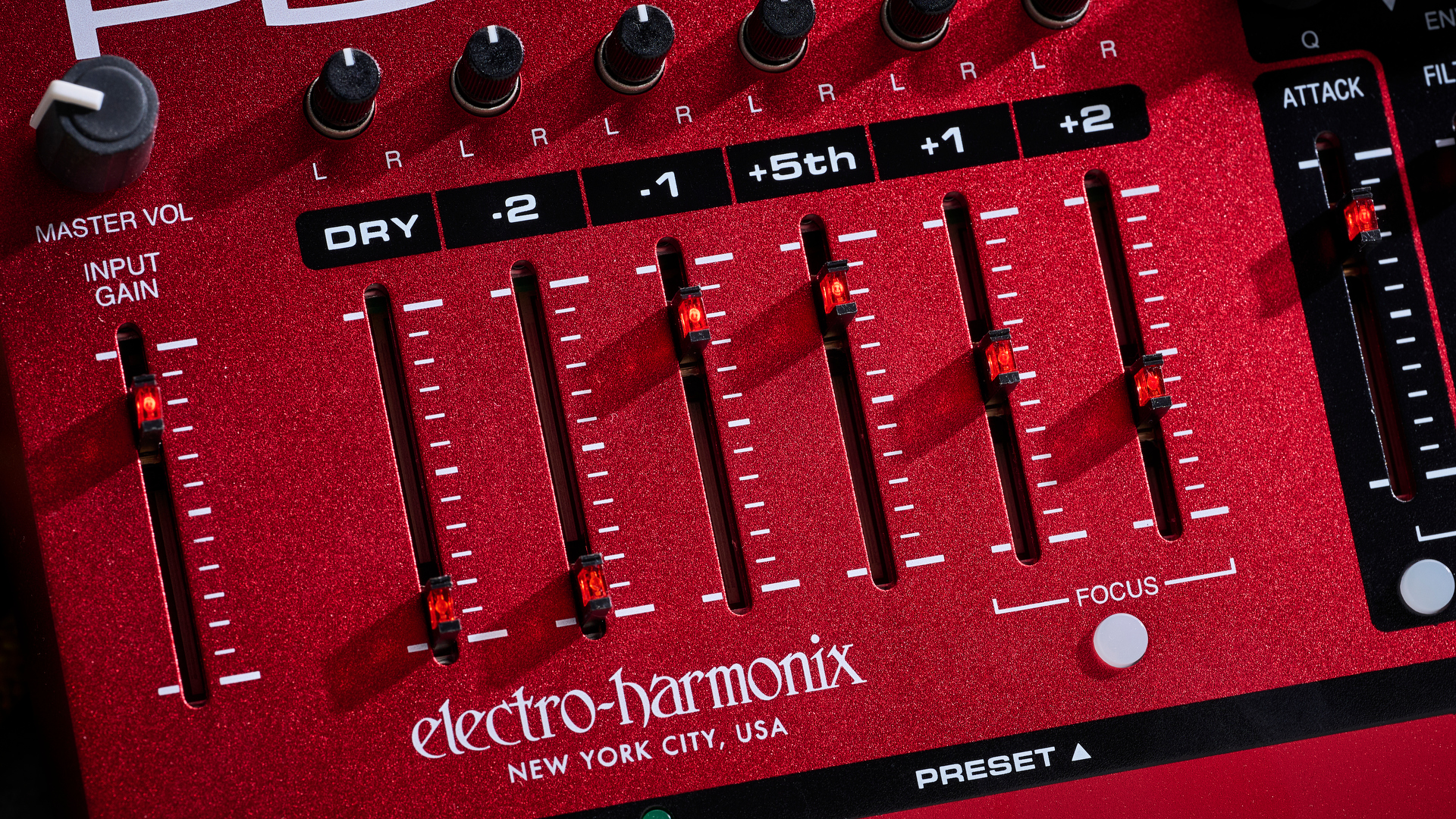
Build quality rating: ★★★★☆
Unboxing the POG 3 gave me a slight sense of awe. It’s an amazing-looking pedal with a huge array of knobs and sliders that appeal massively to the experimentalist in me, and I was super excited to get to make some sounds with it. On first inspection, the overall feel is rugged, with a shiny red chassis that’s surprisingly lightweight considering the amount of controls on its fascia.
The knobs all feel nice and solid with smooth travel on each of them. The tiny knobs for panning each of the voices are especially stiff, which could be a plus or minus depending on your dexterity. There’s a nice little recess for these smaller knobs too, which allows you to ensure they’re centered if you want to return your voices to the middle.
The footswitches are similarly solid, and overall the quality feel that you’d expect from a brand as large as EHX is present and accounted for. I like that the footswitches are angled slightly away from the rest of the chassis, making it a little easier to stomp on when it's nestled amongst a bunch of pedals on a pedalboard.
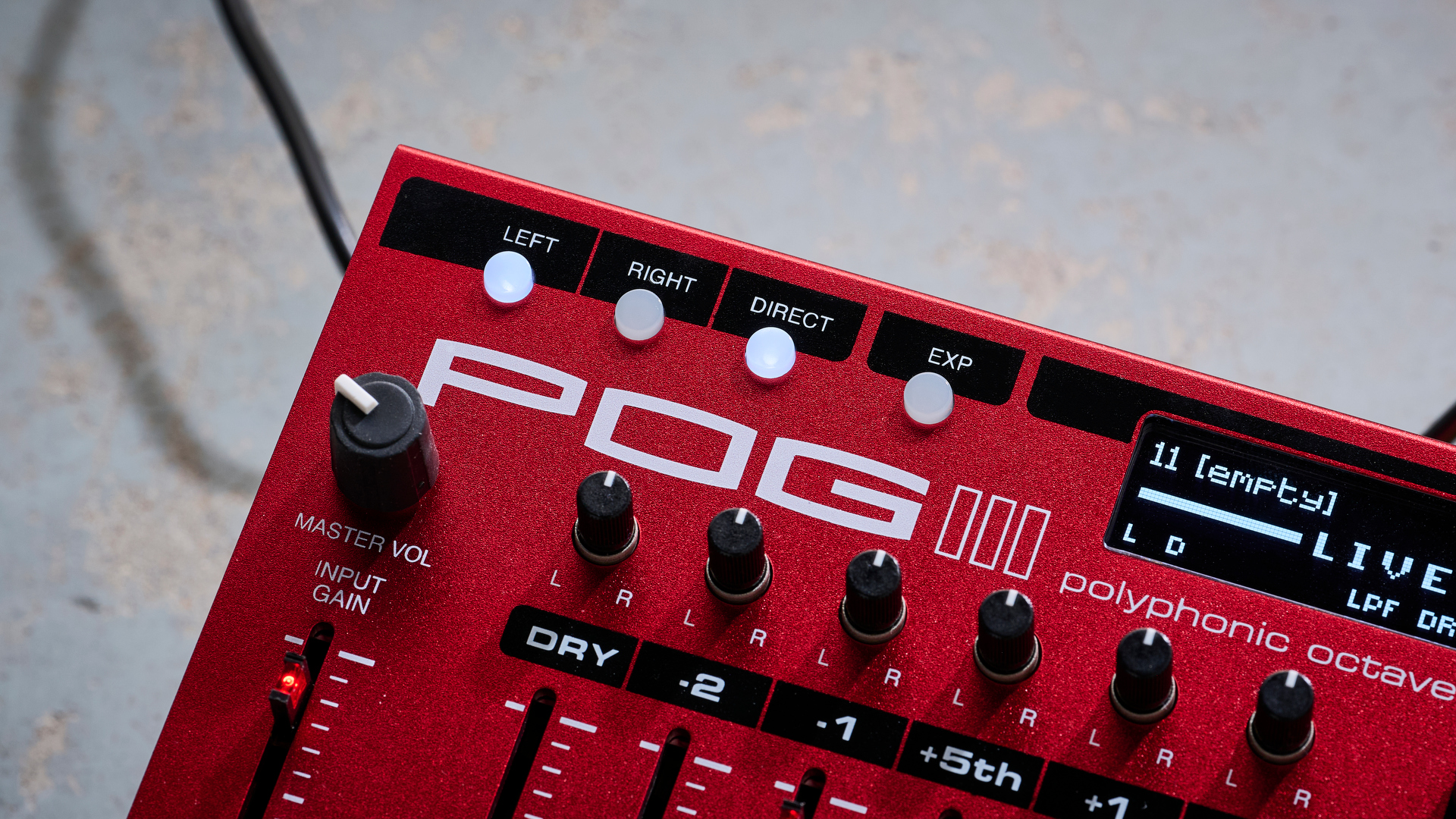
The sliders on the POG 3 however didn’t give me that same sense of security. They feel fairly robust moving up and down, but there’s a lot of side-to-side movement that doesn’t give much confidence they’ll withstand a mistimed stomp when you’re playing on a dark stage.
Broken sliders are nothing new from those who owned earlier editions of the pedal, and I won’t get started on all the crud that can accumulate in the recesses over the years. While it’s nice that EHX is honouring the classic design, I couldn’t help but feel they’d be better served being knobs when it comes to the longevity of the pedal.
Usability
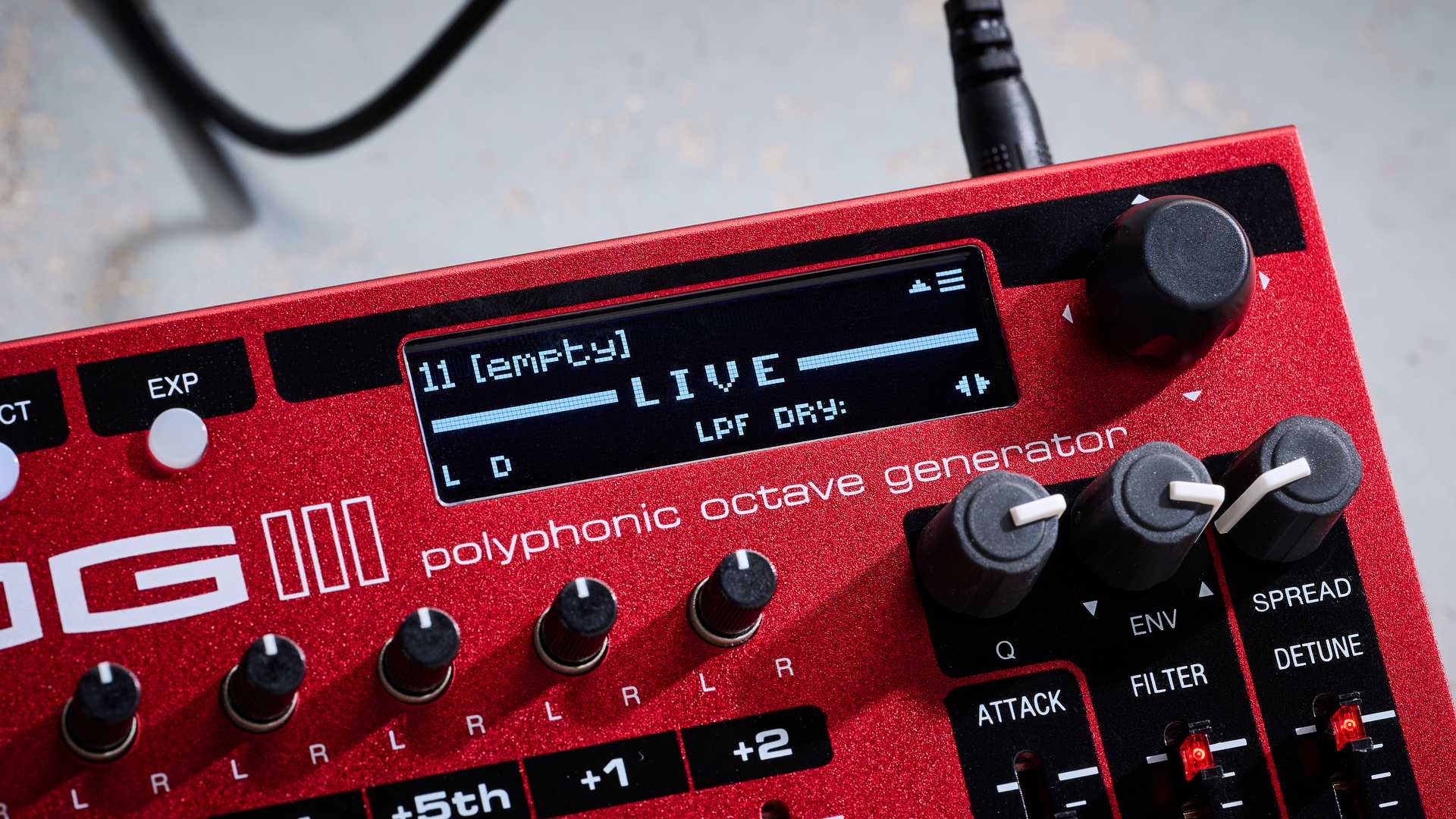
Usability rating: ★★★★☆
As with all the pedals I review, I got started just plugging it in to see what sort of sounds I could come up with. There’s no indication which of the outputs is for mono, but I quickly realised it doesn’t matter which one you plug into your amp, so long as the correct Left or Right buttons are lit up on the front of the unit.
I began by cycling through the presets which can be done by either using the preset footswitches or the the encoder at the top left of the pedal. While the encoder can get you through the presets pretty quickly, handily you can also long press on the preset footswitches to move up and down the 100 preset slots at a rapid pace.
The encoder is rotary for preset selection, but you can also push it in different directions to access deeper options on the pedal. Pushing the encoder up gives you the general menu setting, but it doesn’t do anything moving in the opposite direction from the home screen. The left and right motions give you access to different views of your preset selection with a simplified and more complex version, as well as allowing you to view the positions of the sliders from the loaded preset and the same information in numerical form.
Disappointingly there's still no app for Mac users
Once you start messing with the sliders on the POG 3, anytime you make a move the corresponding LED will begin flashing, letting you know that you’re in the process of making a change. Moving the sliders around to make changes to your sound is simple enough, and I didn’t have any issues experimenting with creating my own tones off the bat. To save your preset you just hold down the encoder and you’re greeted with the options to cancel, save, or save as new.
It’s very intuitive to get started playing, but there is also a lot of depth available in this pedal that will be difficult to get your head around without diving into the manual. It’s packed with loads of information including a lot of helpful hints for honing in the sound and utilising the pedal to the maximum. Definitely something I recommend perusing once you’ve had a little mess with it to really get the most out of the POG 3.
Disappointingly there’s still no app for Mac users, which meant I was unable to test the companion software. From the manual, it looks as though there are a lot of options to curate presets, and potentially even import 3rd party ones, but from the looks of the website there are still issues with the Windows build, and no news on when one will arrive for Mac OS.
Sounds
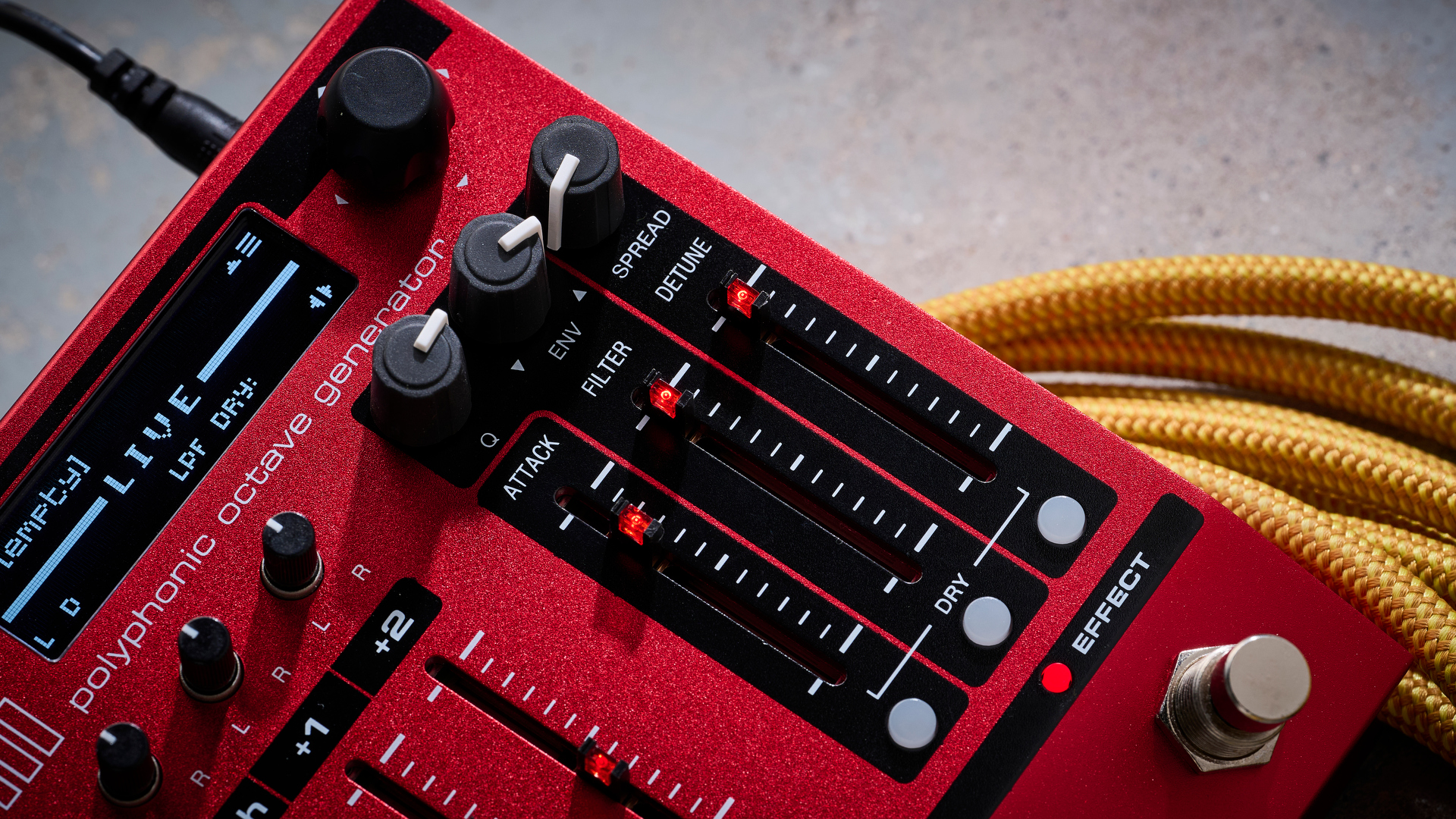
Sounds rating: ★★★★½
I began my tone testing with the presets, armed with a Fender Player II Jaguar and my trusty HX Stomp multi-effects pedal. I was a little disappointed to find there were only 10 factory presets though. At first, I thought I’d done something wrong and needed to factory reset it, but that’s just how it ships.
Once I’d had some fun laying down groovy blues riffs and creepy eastern leads using the presets, I began crafting my own sound
The factory sounds are good, ranging from a classic organ impersonation to iconic octave lead sounds and sub bass tones perfect for heavy riffing. They’re great sounding presets to get you started but realistically they only cover a small amount of what the pedal’s capable of, leaving you to experiment with those sliders to get the most out of it. For some this will be perfectly fine, but there may be those hoping for more in the way of presets to get started.
Once I’d had some fun laying down groovy blues riffs and creepy eastern leads using the presets, I began crafting my own sounds. To start with I had no sound at all despite putting all of the seemingly relevant sliders, so referring back to the manual I found you have to have the filter slider engaged in order for the pedal to make a sound.
That hurdle overcome I began dialing in a blend of the -2 and -1 octaves to create a seriously heavy tone perfect for riffing on the low E string. Messing with the attack slider delays the time it takes for the effected tone to come in, with higher settings giving a swell effect while lower settings let the transient of your dry guitar through just slightly before that lovely glut of low-end hits.
Next up I started messing with the +5th slider, which is instant Tom Morello territory. It’s great fun for playing chromatic licks and when you start combining it with the attack slider you can dial in some creepy-sounding tones that pair nicely with more esoteric scale runs.
The +1 and +2 octave voices sound similarly fantastic, with the more reigned-in sound of a single octave perfect for those Jack White-inspired lead licks. The +2 setting got very shrill very quickly with the bright single coil pickups of the Fender Jaguar, but if you like that high-pitched, digital warble of a DigiTech Whammy you’ll feel right at home with it.
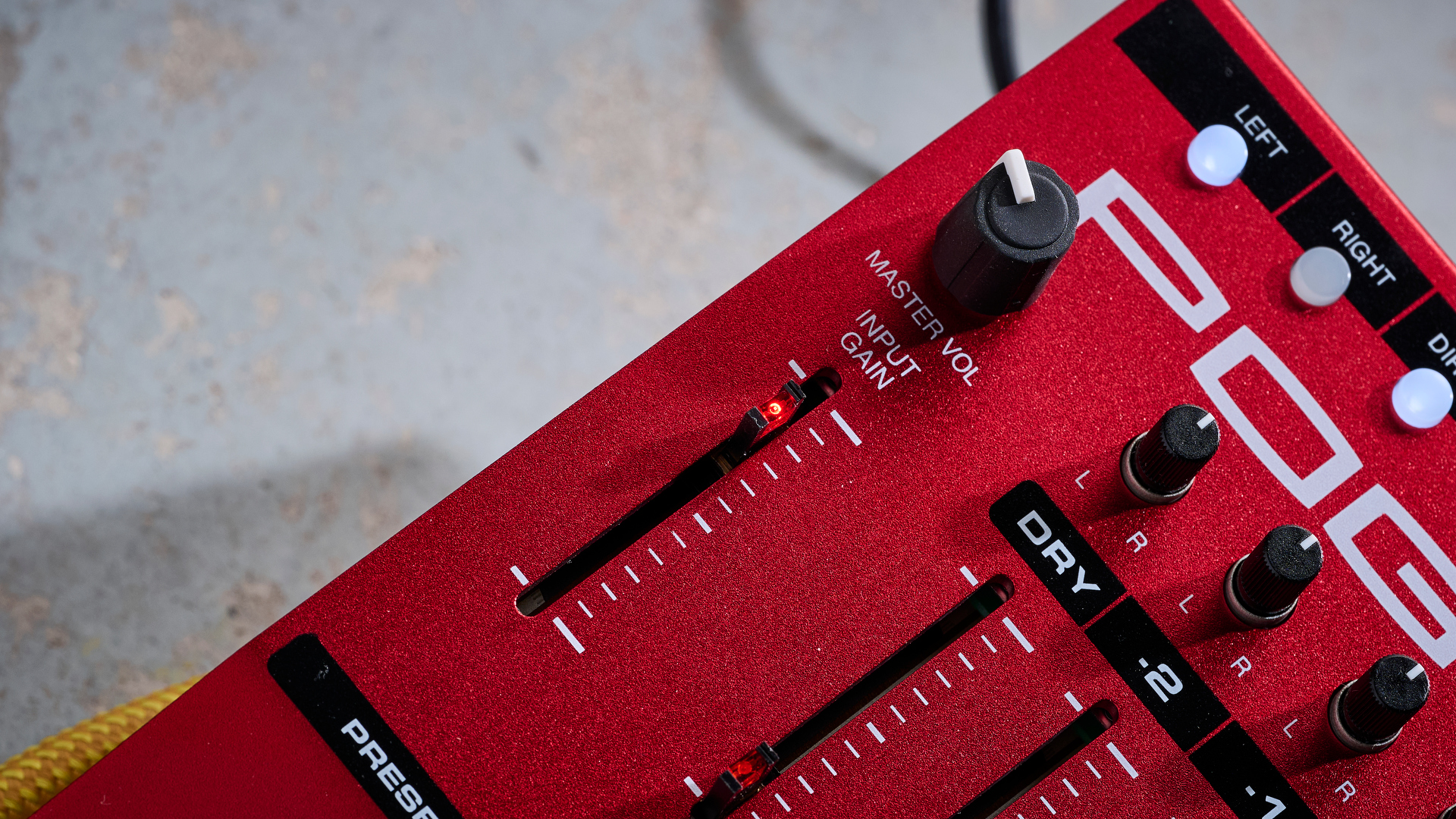
The effects sliders on the right-hand side can have a dramatic impact on the tone, from squelchy funk bass to the slow swell of organ sounds, and various combinations of the sliders and knobs deliver a frankly insane amount of tones. Needless to say, there’s way too much that’s possible I could dive into within the constraints of this review, but take my word for it, there are thousands of possibilities.
The tracking, even with chords, is unbelievably accurate
Manipulating these is what takes you beyond a classic octave effect and starts getting you into synthesizer territory. If you already use synths you'll have a headstart here, but as a guitarist, I had to experiment a lot to get usable sounds out of it. They're fantastic quality though, and the tracking, even with chords, is unbelievably accurate.
The Input Gain slider surprised me with how much it affected my guitar tone, with no added gain on the minimum and a heavily distorted sound at the maximum setting. It sounds phenomenal too, and you could use it as an effect in its own right although on its own at higher settings it starts to sound a little digital. It works well in smaller amounts to just add a bit of extra saturation to the octave voices though, instantly propelling my tone to the front of the mix when I was playing with my band.
Although I criticised the sliders earlier for their lack of durability, when actually using the pedal there’s something inherently satisfying about moving them into just the perfect position. In hindsight, it’s actually easier to manipulate versus turning a knob, and the markers that line the trench the slider sits in means you can quickly get a 50% mix of sounds without much faff.
Final verdict
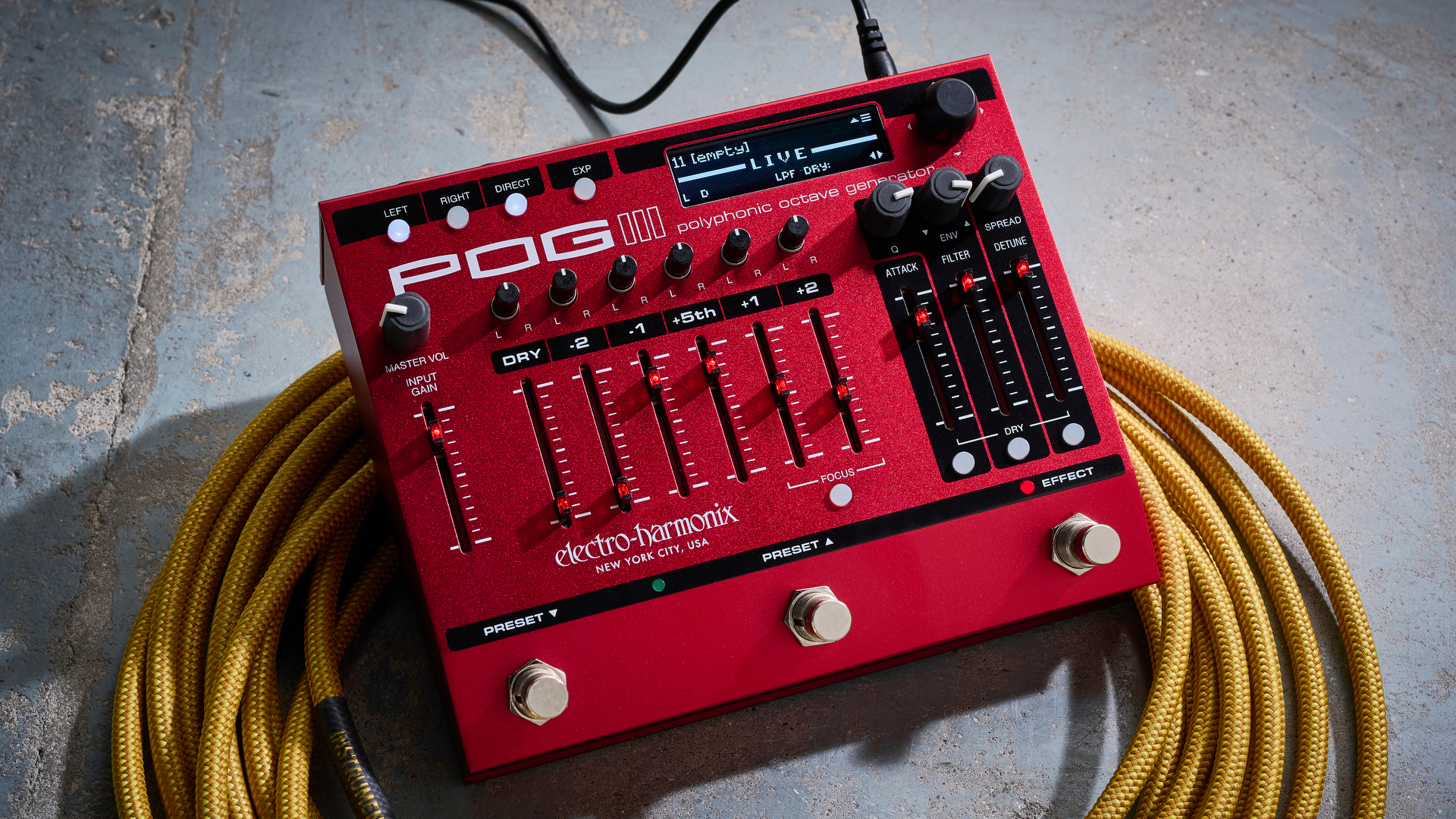
For all intents and purposes, this is a full-on synth pedal, which definitely helps justify some of that huge price point
I’ve purposefully not referenced the cost of the Electro-Harmonix POG 3 throughout this review as I wanted to judge the pedal purely for its sounds. Unfortunately with a price tag well above the $/£500 mark, I think many guitarists will be torn on whether or not it’s actually worth such a huge price, especially as you can pick up a used POG 2 for a lot less, which does many of the same things the POG 3 does.
You can do a lot with this pedal, which will go some way to justifying its price tag for some, and that superb selection of sounds takes it far beyond being just another octave pedal. For all intents and purposes, this is a full-on synth pedal, which definitely helps justify some of that huge price point. It’s also surprisingly easy to use considering its complexity, which is another huge plus point for me.
MusicRadar verdict: The Electro-Harmonix POG 3 is a frankly ludicrous pedal that stakes its claim as the ultimate octave funhouse and is capable of so much more. With an endless array of sounds to craft and huge flexibility in signal routing, despite a few small flaws, it’s a creative powerhouse - if you’ve got the cash to drop on it.
Test | Results | Score |
|---|---|---|
Build quality | Rugged chassis, but question marks about the sliders. | ★★★★☆ |
Usability | Easy enough to get started but plenty of depth. | ★★★★☆ |
Sounds | More options than you’ll know what to do with. | ★★★★½ |
Overall | A pedal that’s great fun but incredibly expensive. | ★★★★☆ |
Also try
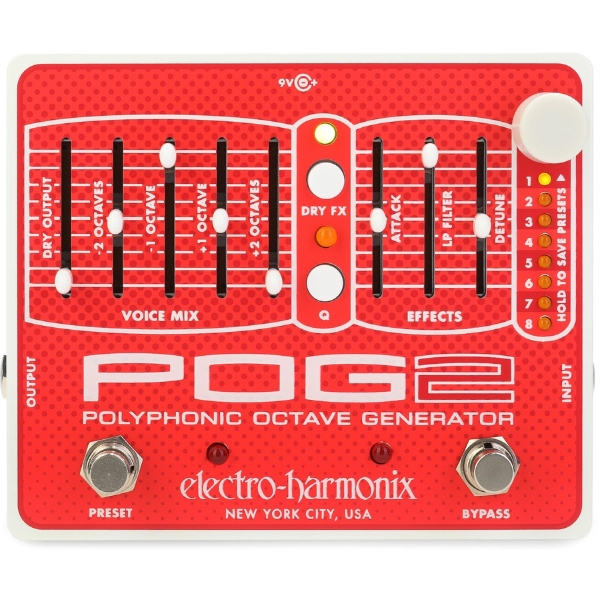
$400/£220
If you don’t want to go the whole hog and stump up the cash for the POG 3, you can still get the POG 2 brand new cheaper, or even pick one up secondhand to save even more cash. Providing many of the same tones but minus the digital wizardry of the POG 3, it’s still a great pedal in its own right.
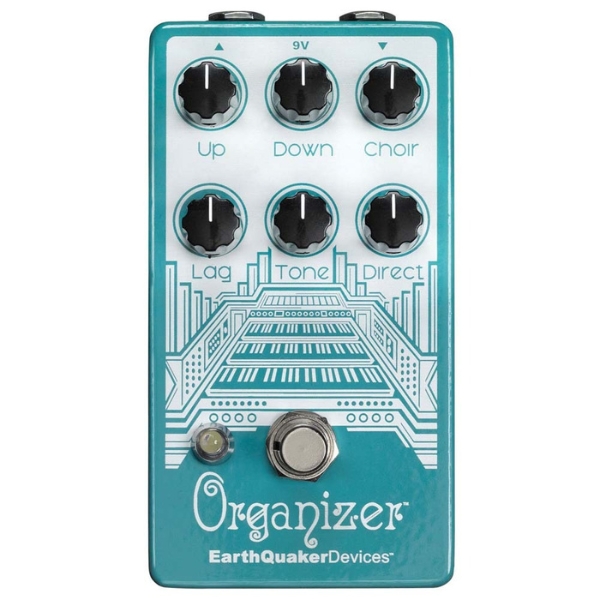
$199/£205
If you want an octave pedal with a difference, the EarthQuaker Devices Organizer is a great shout. Although it’s more of an Organ-inspired sound, you can do a lot more synthesizer-style sounds than a regular pitch shifter pedal can do, making it great for the more experimental guitarist who wants something different from that regular POG or Whammy tone.
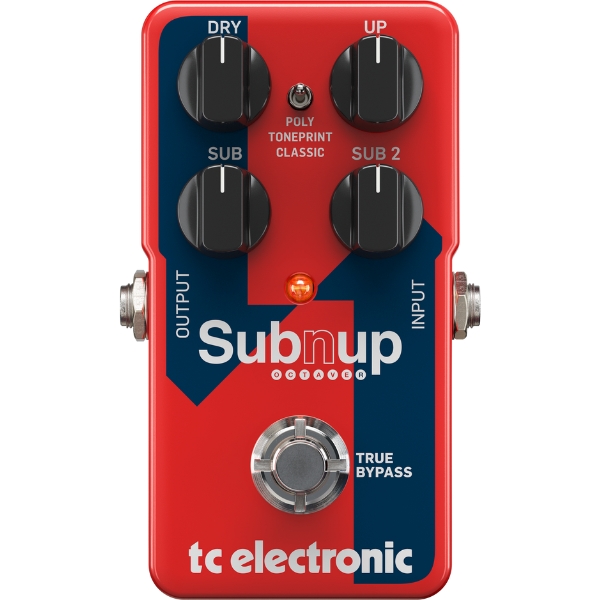
For those who don’t have a few hundred in their back pocket, you can still get great tracking and sounding octave tones on a budget. The TC Electronic Sub N Up is one such pedal, delivering iconic POG and Whammy-inspired sounds without costing the Earth. It’s missing some of the more advanced features the other pedals here give you, but it does a brilliant job of tacking complex chords considering how low-cost it is.
Read more: TC Electronic Sub 'N' Up Octaver review
Hands-on videos
Guitar Bonedo
Pete Thorn
Chords Of Orion

Matt is a Junior Deals Writer here at MusicRadar. He regularly tests and reviews music gear with a focus on audio interfaces, studio headphones, studio monitors, and pretty much anything else home recording-related. Matt worked in music retail for 5 years at Dawsons Music and Northwest Guitars and has written for various music sites including Guitar World, Guitar Player, Guitar.com, Ultimate Guitar, and Thomann’s t.blog. A regularly gigging guitarist with over 20 years of experience playing live and producing bands, he's currently studying Sound Engineering and Music Production at Spirit Studios in the UK.
You must confirm your public display name before commenting
Please logout and then login again, you will then be prompted to enter your display name.
"That's what it takes to make music that's gonna last forever": Olivia Rodrigo and Chappell Roan producer Daniel Nigro on crafting timeless tracks
“A fully playable electro-mechanical synth voice that tracks the pitch of your playing in real time”: Gamechanger Audio unveils the Motor Pedal – a real synth pedal with a “multi-modal gas pedal”
“It was the first rock monster that we'd created”: How an explosive 2001 switch-up revealed just how ferocious Muse could get
